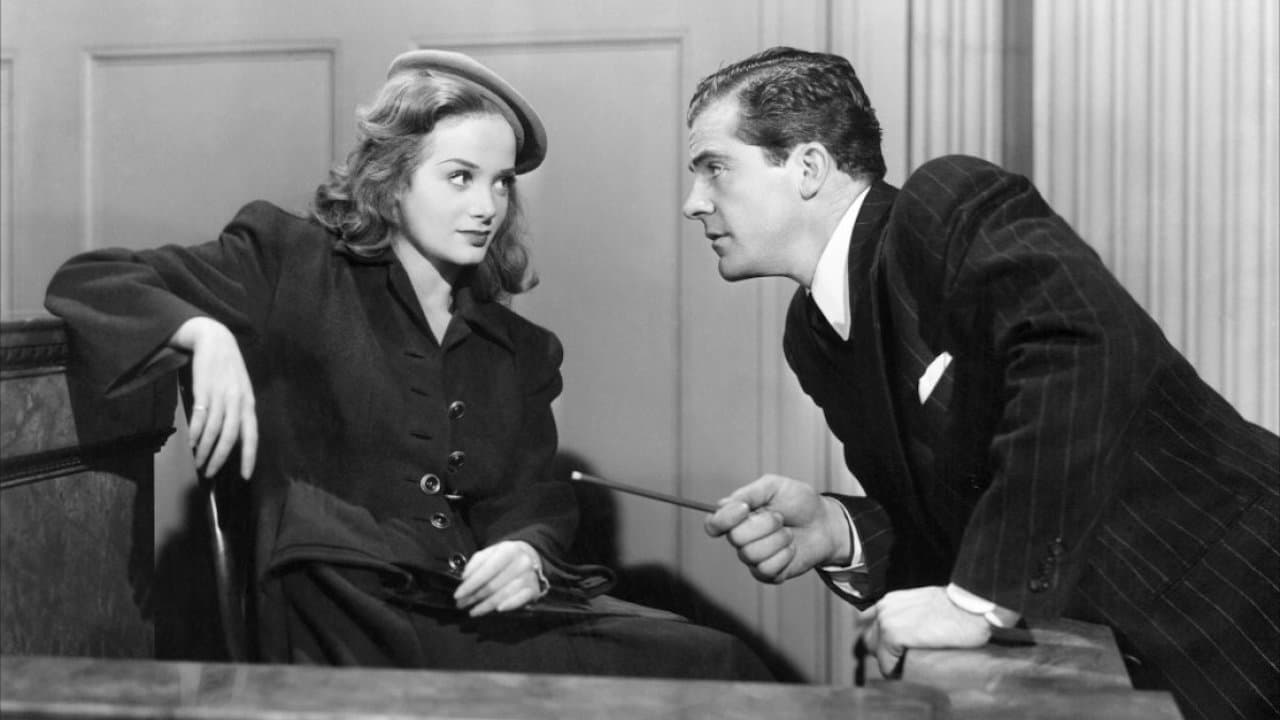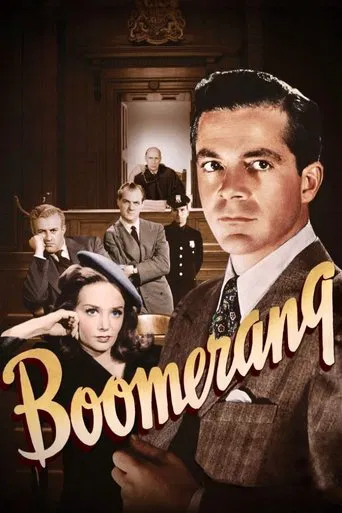

a film so unique, intoxicating and bizarre that it not only demands another viewing, but is also forgivable as a satirical comedy where the jokes eventually take the back seat.
... View MoreThe acting is good, and the firecracker script has some excellent ideas.
... View MoreThere's a more than satisfactory amount of boom-boom in the movie's trim running time.
... View MoreYes, absolutely, there is fun to be had, as well as many, many things to go boom, all amid an atmospheric urban jungle.
... View MoreIn Connecticut, a well-known priest is murdered by a man on the street and flees. The politicians and the police are pressed by the society to find the killer, but the Chief of Police Harold F. "Robbie" Robinson (Lee J. Cobb) has no clue despite the witnesses. When the former soldier John Waldron (Arthur Kennedy) that has fought in the World War II is captured in another town, the witnesses identify him as the killer and he is forced by Robbie and his men to sign the confession of murder. The he claims innocence, but everybody believes he is the killer. However the righteous State's Attorney Henry L. Harvey (Dana Andrews) finds inconsistent evidences and decides to investigate against the opposition of the politics and the society."Boomerang !" is a film based on a true story about the morality and honesty of a State Attorny that risks his career to prove that a man is innocent and scape goat of a political situation. The plot is engaging and holds the attention of the viewer. It is beautiful to see the story of men like the lead character that faces the Powers That Be to keep his ethic and principles. My vote is seven.Title (Brazil): "O Justiceiro" ("The Righteous Man")
... View MoreBoomerang! is one of producer Daryl F. Zanuck's semi-documentary films from the late 1940s. It is not the first time he has made a motion picture that was inspired by a magazine article. In this case, the article was published in The Reader's Digest and is based on a true story.The story is simple. Dana Andrews plays a prosecuting attorney who does a 180 and decides that the man he should convict is, in fact, innocent. The film leaves the audience hanging with the idea that Andrews may have been wrong, even after 'justice' has been doled out.But beyond the headlines and the courtroom theatrics, there is a larger story here. Director Elia Kazan clues the audience in on the powerful behind-the-scenes maneuvering of city politicians whose aim it is to use the trial to placate voters.
... View MoreElia Kazan directed this true story set in Connecticut, that begins with the mysterious murder of a popular priest that proves quite difficult to solve, until finally a suspect emerges: a drifter named John Waldron(played by Arthur Kennedy) who was known to be in the area, and has no alibi. The police chief(played by Lee J. Cobb) is satisfied with his suspect, but State Attorney Harvey(played by Dana Andrews) isn't so sure, since there is a distinct lack of evidence(a motive in particular) He then decides to defend Waldron, much to the surprise of his town. Effective film with good acting and direction, and a most interesting recreation of this mysterious case and its effect on the community.
... View MoreBoomerang! (1947)In some ways this is an intensely well made and satisfying film, and when you have Dana Andrews in the lead role combined with Elia Kazan directing, and throw in first rate character actor Lee J. Cobb, you have something worth watching.It's nice early Kazan, but it stumbles at times, and never lifts off, never gels. Here's why.First of all, it's based (very closely) on fact, and sometimes the facts are dramatic but not necessarily good drama. Hamlet, if it were straight documentary truth, would probably shock more and enchant less. And so here, we start with a horrifying crime which takes the viewer quite by surprise. Then, in a continuing voice-over documentary style, we are launched on a huge manhunt. Facts are gathered, suspects suspected, policework unleashed, all acted and congealed very intelligently. A large twist occurs (with something of a stutter, dramatically), and then we are in a different kind of drama, a courtroom battle, with Andrews playing the unlikely role of prosecutor looking for the actual truth in a case rather than a conviction.And then the court battle ends, and the movie sort of drizzles to a stop. And you might well say (as I did), "How like life." Or something equally unexciting. It's not a like a neo-realist hyper real movie, using amateur actors and so on. No, it's just an adapted true life crime story that might have been something more. For two sides to this coin, I'd first mention Kazan's own "On the Waterfront" which uses a real life kind of scenario but turns it into a dramatic masterpiece. And then some harder hitting reality movie like "The Phenix City Story" (1955) shows what a dramatic version of the truth, unchanged, might look like.Of course, Kazan and crew are experts, and this is no dud. Andrews, if he is your taste, is in great form, really, within his shifting role. And the supporting cast does wonders, as cops, and as regular people, which this movie is ultimately about. Recommended, yes, but with expectations in line with, uh, reality.
... View More